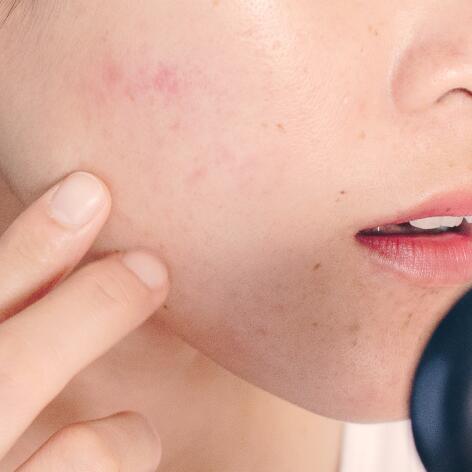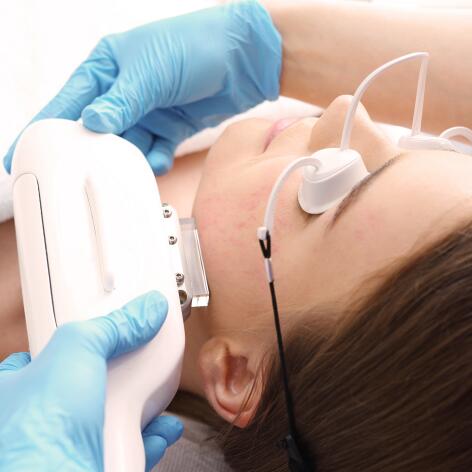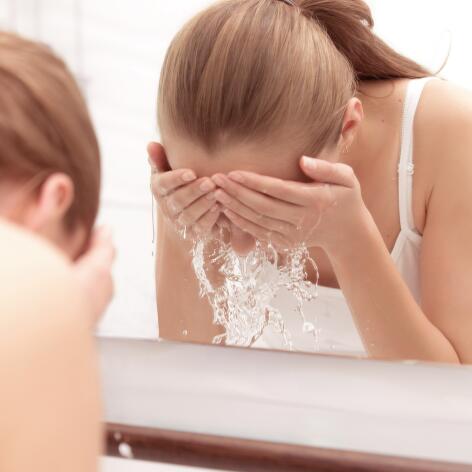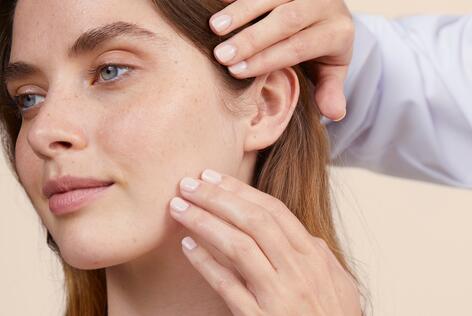Getting rid of acne scars
Getting rid of acne scars
Acne pimples are more or less inflammatory lesions. As they fade, they sometimes leaves a mark: acne scars, which are often dreaded because they can cause embarrassment. So how can you fade these marks?
Targeted solutions to reduce your acne scars
With the right treatment, your skin lesions on the face, neck and chest are likely to disappear, while some stubborn acne lesions can leave indelible scars. For less visible acne scars, treatments are tailored to the type of scarring. Treatment is surgical for atrophic scars, and often supplemented by resurfacing techniques. For the most stubborn scars, or so-called hypertrophic scars, the methods used are cryotherapy, cryosurgery, corticoid injections and silicone dressings.

How can you fade scars on the face?
For acne scars on the face which are very visible, a range of techniques (dermabrasion, laser abrasion, peeling with trichloroacetic acid or phenol, resurfacing, fractional photothermolysis) can be carried out by your dermatologist. These steps smooth the surface of the damaged skin and contribute to neo-collagenesis: a process that encourages your own cells to produce collagen, an essential protein for healing. These treatments require social isolation for about ten days and regular nursing care.

“A kneading massage with a repairing balm will reduce pigmentation, pain and itching, and increase skin thickness, elasticity and suppleness”.
French Society of Dermatology
How to choose make-up your acne scars
Camouflaging acne scars can be done discreetly and can be adapted to the type of imperfection in terms of texture and colour
Correctors like compact foundation creams with high coverage mask red (light skin) and hyperpigmented (dark skin) scars. First, colour correction is useful for discreetly masking highly coloured scars and avoiding a "mask effect". We recommend a yellow corrector stick for blue/purple blemishes, a green corrector stick for red blemishes and a coral corrector stick for brown blemishes.
For deep scars, even out your complexion with a foundation containing light-reflecting pigments to "blur" the texture of acne scars more effectively. Pat foundation on with a sponge and layer a touch of beige concealer over each acne scar to fill out hollow scars.
Discover our make-up tips
FRIENDLY (AND EXPERT) ADVICE
Avoiding acne scars: take time to reflect
Acne scar treatments shouldn’t be prescribed too early.
As a first step, use 2-in-1 dermo-cosmetic products to take care of your scars which prevent their appearance and reduce them. In case your skin resists the treatment, it should only be started after a breakout when the skin isn't inflamed. Consider your options a few weeks after the end of the breakout before starting treatment to reduce acne scars. This is not always an easy time for patients, but it is necessary to give scars a chance to become less visible on their own. The solution will then be more suitable and less invasive.

Avoiding acne scars: what to do, and what not to do
Here are the main points to prevent acne scars from appearing:
- Cleanse your skin twice a day with Cleanance Cleansing Gel for acne-prone skin, Cleanance Micellar Water for combination and blemished skin, Cleanance Hydra for sensitive skin.
- Use an anti-blemish cream to prevent and reduce scar hyperpigmentation, and a repair cream to help the skin heal.
Our solutions for taking care of your acne-prone skin
Eau Thermale Avène skin care designed to reduce your acne scars
- Repairing Protective Cream
Cicalfate
Repairing Protective CreamSoothes - Repairs - Purifies1 opinions
NEWSLETTER
We’re always here for your skin!
All our tips for taking care of your skin day to day.

Which skin care routine should you adopt?
Identify what it really needs with the help of our experts and discover the most suitable skin care routine for you.

